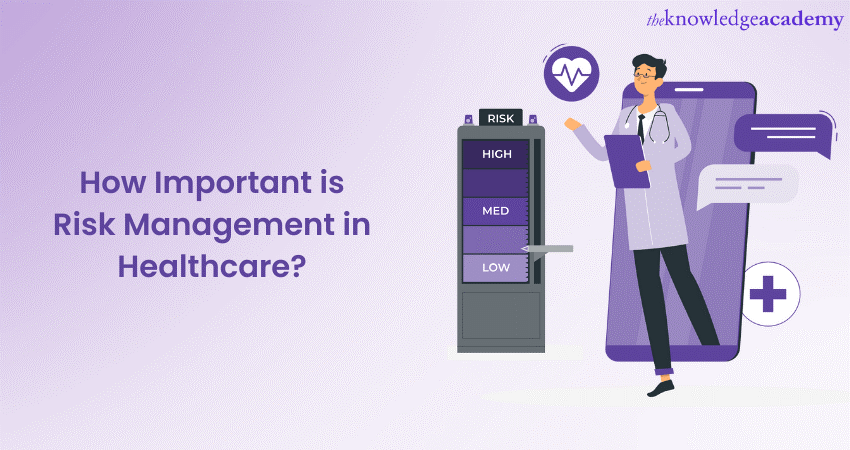The Influence of the Importance of Risk Management on Business Governance
The Influence of the Importance of Risk Management on Business Governance
Blog Article
Discovering the Importance of Risk Management for Effective Decision-Making Methods
In the complex world of company, Risk Management arises as an essential consider the decision-making procedure. The capacity to determine possible threats and chances, and plan as necessary, can spell the distinction in between success and failure. With devices such as SWOT and PESTEL, organizations are equipped to make informed options, fostering strength and flexibility in an ever-changing environment. Wondering exactly how this functions? Allow's unpack the dynamics better.
Understanding the Idea of Risk Management
Risk Management, a critical part in decision-making, is usually misunderstood or oversimplified. Generally, it describes the identification, analysis, and prioritization of dangers to decrease, monitor, and control the likelihood or effect of regrettable events. Nevertheless, it's not simply about preventing negative results, but also regarding identifying potential possibilities. Risk Management entails disciplined and structured techniques, utilizing data and insightful assessments. It calls for a detailed understanding of the organization's context, objectives, and the potential risks that could combat them. From monetary uncertainties, legal responsibilities, calculated Management mistakes, to accidents and natural disasters, it addresses numerous threats. Notably, reliable Risk Management is not stationary; it's a continual, forward-looking process that develops with altering scenarios.
The Duty of Risk Management in Decision-Making Processes
In the realm of critical preparation and service operations, Risk Management plays an essential duty in decision-making processes. Risk Management thus comes to be an essential device in decision-making, aiding leaders to make informed options based on an extensive understanding of the threats involved. Risk Management offers as a crucial component in the decision-making processes of any type of company.

Just How Risk Management Boosts Strategic Planning
In the context of tactical planning, Risk Management plays a pivotal duty. Launching with the recognition of prospective threats, it better encompasses the application of Risk reduction procedures. The function of Risk Management is not fixed but vibrant, as it requires consistent surveillance and adjusting of approaches.
Determining Possible Risks
Executing Risk Reduction
Having developed the value of determining potential risks, the following action is to check out Risk reduction. This process includes establishing and carrying out strategies to handle identified dangers effectively. It is a vital element of strategic planning as it enhances decision-making by minimizing prospective unfavorable end results. Risk mitigation methods can vary from Risk evasion, Risk transfer, to run the risk of reduction. Each technique must be customized to the certain Risk, considering its prospective influence and the organization's Risk tolerance. Reliable Risk mitigation needs a deep understanding of the Risk landscape and the prospective impact of each Risk. This understanding enables organizations to focus on threats and allocate sources efficiently, making sure that the most significant risks are dealt with initially.
Monitoring and Adjusting Approaches
Though Risk mitigation is a crucial action in critical planning, continual tracking and change of these methods is just as vital. This recurring procedure allows companies to determine new risks and reassess existing ones, ensuring the implemented techniques stay reliable in the ever-changing service setting. It additionally gives a chance to review the success of the Risk Management actions, permitting modifications to be made where necessary, more enhancing calculated planning. Efficient surveillance and modification call for making use of analytics and essential efficiency indicators (KPIs) to gauge effectiveness. These devices give beneficial data-driven understandings that can inform strategic decision-making. Monitoring and changing Risk Management strategies is a vital element for enhancing an organization's resilience and tactical preparation.
Instance Studies: Effective Risk Management and Decision-Making
Worldwide this post of business and finance, successful Risk Management and decision-making frequently work as the columns of thriving ventures. One such entity is an international oil business that mitigated financial loss by hedging versus changing oil rates. In an additional instance, a technology start-up flourished by recognizing and click approving high-risk, high-reward methods in an unstable market. A global bank, encountered with regulative uncertainties, successfully browsed the circumstance via aggressive Risk assessment and dynamic decision-making. These cases highlight the worth of astute Risk Management in decision-making processes. It is not the lack of Risk, but the Management of it, that commonly separates effective firms from unsuccessful ones. These situations highlight the important function of Risk Management in strategic decision-making. importance of risk management.
Tools and Strategies for Reliable Risk Management
These devices, such as Risk registers and warm maps, aid in determining and assessing possible threats. Risk feedback strategies, a key component of Risk Management, entail approving, avoiding, transferring, or mitigating dangers. With these strategies and devices, decision-makers can you can try this out navigate the facility landscape of Risk Management, thus facilitating educated and effective decision-making.
Future Fads in Risk Management and Decision-Making Methods
As we discover the huge landscape of Risk Management, it comes to be evident that the techniques and tools made use of today will certainly proceed to develop. The principle of Risk culture, where every participant of an organization is conscious and entailed in Risk Management, will certainly obtain more prominence. These fads advertise a more inclusive and positive approach in the direction of Risk Management and decision-making.
Verdict

Risk Management therefore becomes an important tool in decision-making, helping leaders to make educated options based on a comprehensive understanding of the risks entailed. Risk reduction techniques can vary from Risk avoidance, Risk transfer, to risk decrease (importance of risk management). Reliable Risk reduction needs a deep understanding of the Risk landscape and the potential effect of each Risk. Risk feedback methods, an essential part of Risk Management, include accepting, staying clear of, moving, or mitigating risks. The concept of Risk society, where every member of an organization is conscious and involved in Risk Management, will gain much more prestige
Report this page